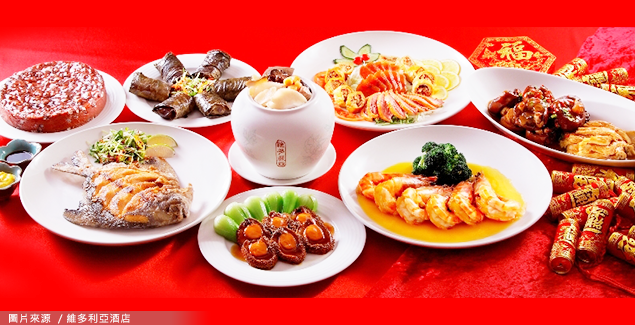Celebrating Lunar New Year
Even though I lived in Taiwan until the age of nine, I grew up in a mostly Catholic household where I remembered Christmas much more vividly from my childhood than Lunar New Year. But there were many beautiful traditions I can still recall here and there, like being handed the red envelope money (a tradition to hand money to children for good luck, children defined as anyone who isn’t married) and the candied sweets of all kinds that you would never see outside of this time of year, where anything from winter melon gourds, red beans, lotus seeds, lotus roots, are all sugared and candied. My favorite was the winter melon gourds and lotus roots. And how you’re supposed to wear something red and new, to bring in new and good luck for the year.
Then there’s the firecrackers to scare away the monsters. Apparently there was a dragon monster “year” (direct translation) back in the day that would come and snatch away villagers. (It’s funny how literally true that is with our passing years, and if I can only scare away aging with firecrackers!) And the tradition of a major spring clean prior to the new year to clean out the old and welcome the new! Just don’t throw anything away for the first few days of the Lunar new year, so you don’t accidentally throw any of your new luck away.
As for food traditions, I initially only knew of the most common ones (tangerines, fish, more on that below) and it wasn’t until I started working when colleagues would ask me what the traditions and customs were, that I read up and learned how the Lunar New Year feast was “properly” celebrated, and what some of the foods I saw during my time in Taiwan meant. (Afterall, a meal consisting of fish and tangerines is barely dinner, let alone a feast) And if there is one thing to know about the ancient culture of the Middle Kingdom, it’s the proverb “To the people, food is heaven” (民以食為天).
In Taiwan, there is NO other celebration during the entire year that is as important as the Lunar New Year’s feast, which falls on the evening before the first day of the Lunar New Year. It’s like Christmas and Thanksgiving combined and the once a year where all family members, near and far, gather to celebrate the coming of the new year together. So let’s take out our chopsticks (did you know that’s a lucky thing too? Chopsticks rhyme with having children soon) and talk about tastiest piece of it, starting with the 5 most common food traditions for Lunar New Year which many of us may either have googled or heard from friends/family over the years:
My favorite adzuki bean coconut rice cake. Check out the easy blender recipe below
Tangerines (橘子) rhyme with good luck (吉利), so you’ll often see it gifted to families and friends during this time.
Dumplings are shaped similar to silver ingots (銀錠) back in the day. The more you eat, signifies the more money you’ll have. It also rhymes with exchange (「交」和「子」), to rid the old and bring in the new (「交換午夜」).
A wish for having left over money each year (年年有餘), rhymes with having fish each year(年年有魚).
Mochi rice cakes (年糕) rhyme with higher (income/position/height of your child) each year (年高). (Check out my recipe here)
Golden Spring rolls (金黃春捲) are similar in appearance to bars of gold, and bring good fortune and wealth. (Check out my recipe here)
But as with any feast, there’s always a bountiful variety of foods served. So I dug a bit deeper for the variety of foods that are commonly served during the new year, where their significance is less commonly talked about, and composed the list below:
Photo credit: Victoria hotel, Taiwan
Tofu represents good luck and happiness (好運幸福)
Egg good health for the family (家庭健康)
Roasted pig means safety (平安)
Lobster means good money fortune (財運)
Peach means long life. (長壽)
Long noodles also means long life.
Scallops and clams are like money coins. (招財運)
Grapefruits means family unity (家庭合一)
Green grapes mean abundance (豐盛)
Whole chicken means family harmony and happy marriage (家庭和諧及婚姻美滿)
Duck means happiness (快樂)
Because the Lunar New Year celebration and feast is supposed to be a mini reflection on your fortunes for the coming year, there’s a lot of emphasis on celebrating it properly. This is when companies would host celebrations at the finest hotels and restaurants to thank their employees, families from near and far would fly, train, drive in to gather together to celebrate the close of a year, and take a few days break, recharge, in anticipation of the new year.
Globally, we’ve had a tumultuous 2020, the year of the rat, which is typically foretold as being unpredictable and full of erratic ups and downs. As it finally comes to a close, let’s celebrate the coming of the year of the Ox together, a symbol of a slow and steady year, towards healing and recovery.



